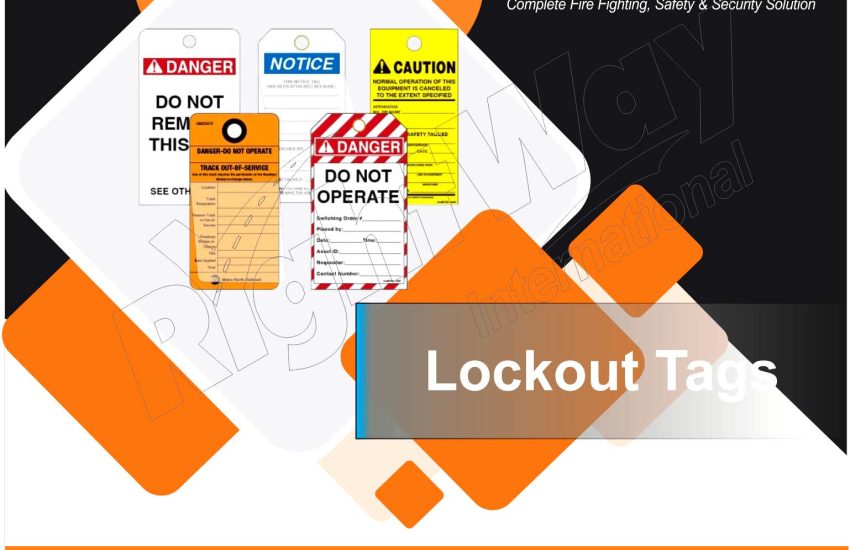Lockout tags play a critical role in lockout/tagout (LOTO) procedures. These tags are used to clearly identify machinery or systems that are under maintenance, helping prevent accidental or unauthorized operation. When used properly, lockout tags contribute significantly to workplace safety and regulatory compliance.
Purpose of Lockout Tags
Communicating Safety Information
Lockout tags clearly display important information about equipment that is being serviced. Typically, they include the name of the responsible worker, the reason for the lockout, and the expected completion time. This visibility ensures everyone on-site understands the equipment’s status.
Preventing Unauthorized Operation
Attaching a lockout tag to isolated equipment warns others not to operate it. This simple action can prevent accidents caused by the unexpected startup of machinery.
Ensuring Compliance
Many safety standards, including OSHA’s, require the use of lockout tags in LOTO procedures. These tags help enforce proper practices, supporting compliance with regulatory requirements.
Enhancing Accountability
Each tag documents who performed the lockout and when. This traceability increases accountability and ensures that workers follow protocols throughout the maintenance process.
Types of Lockout Tag
Standard Lockout Tags
These tags offer basic fields for writing information such as the worker’s name, date, and reason for the lockout. They are ideal for general maintenance tasks.
Customizable Lockout Tags
Custom tags allow workers to enter more specific details, including contact numbers and additional safety notes. This extra information can enhance clarity and coordination.
Durable Lockout Tag
Constructed from tough materials like plastic or laminated paper, these tags resist moisture, chemicals, and extreme temperatures. They’re best suited for harsh industrial environments.
Tags with Symbols or Graphics
These tags feature universally recognized symbols like “Do Not Operate” or “Under Maintenance.” Graphics help bridge language barriers and quickly communicate critical information.
Self-Laminating Tags
Self-laminating tags protect handwritten information with a clear film, keeping it legible even in wet or dirty environments.
Pre-Printed Lockout Tags
These come with standard warnings and message fields. They provide consistent communication across multiple systems or equipment types.
Benefits of Using Lockout Tags
Improved Communication
Clear tags inform all personnel about the status of machinery. This prevents confusion and helps coordinate safe work activities.
Enhanced Workplace Safety
By warning others not to energize equipment, lockout tag reduce the chance of accidental reactivation. As a result, they significantly lower the risk of injury.
Regulatory Compliance
Lockout tag support compliance with OSHA and other safety standards. Proper use helps companies avoid citations and maintain a safe working environment.
Stronger Accountability
Each tag identifies the worker responsible for the lockout, creating a record of the maintenance event. This improves oversight and ensures that teams follow procedures.
Long-Term Durability
High-quality tags stand up to daily wear and tough conditions. Their lasting visibility ensures that warnings remain intact throughout the maintenance process.
Applications of Lockout Tag
Industrial Facilities
Tags are used to mark machinery during servicing, helping prevent accidental startup and ensuring safe maintenance routines.
Manufacturing Plants
In busy production environments, lockout tag clearly identify out-of-service equipment and provide essential information to all workers nearby.
Construction Sites
Tags on heavy machinery alert team members that a unit is under maintenance. This minimizes risk and ensures effective communication on fast-paced job sites.
Commercial Buildings
From elevators to HVAC systems, lockout tag in commercial settings help technicians perform safe repairs on complex infrastructure.
Utilities and Public Services
Tags in utility settings—such as water plants or power stations—help safeguard critical infrastructure during routine inspections or emergency maintenance.
Conclusion
Lockout tag are more than just labels—they’re lifesaving communication tools. By identifying locked-out equipment, informing team members, and maintaining compliance with safety standards, these tags play a key role in any effective LOTO program.


